What makes migrants vulnerable to gender-based violence?
Gender and migration are intersecting factors that mutually affect each other. Migration can have positive and negative effects on migrants depending on their individual characteristics and conditions. Likewise, an individual’s gender influences their experience of migration, including the risks and vulnerabilities involved in their journey.
Migration has the potential to create positive outcomes and contribute to women’s empowerment. It can open opportunities for: higher income, asset ownership, self-esteem, decision-making power and new autonomy. On the other hand, gender and migration can intersect to produce negative outcomes, such as multiple forms of discrimination, exploitation, and stigmatization. Migration may also offer women and girls an opportunity to escape situations of gender-based violence in their countries of origin.
Gender-based violence (GBV) is an umbrella term for any harmful act that is perpetrated against a person’s will and that is based on socially ascribed (i.e. gender) differences between males and females. It may be physical, sexual, emotional, verbal, financial and/or psychological. It can occur in public or in private and individuals of all genders can be victims. It disproportionately affects women, girls, and those of diverse gender identity or diverse sexual orientation (LGBTQI) persons because of underlying gender inequalities. Worldwide, an estimated one in three women will experience physical or sexual abuse in her lifetime.
GBV can be a factor that drives migration from countries of origin. According to a report by Support Kind (2018), GBV perpetrated by family members, gangs and drug traffickers forces many women, girls, and LGBTQI individuals to leave El Salvador, Guatemala, and Honduras. GBV, particularly sexual violence, is used to maintain control over territories and populations, as gang members punish women, girls and their families for not complying with their demands. An average of less than 10 percent of GBV cases in the region result in convictions. As they are unable to gain protection in their countries, many women, girls and LGBTQI individuals migrate in search of safer living conditions.
Migration does not cause GBV. However, during their journey, some migrants face situations where they are more vulnerable to violence. Numerous factors influence a person’s risks and vulnerabilities throughout their migration journey. Alongside gender, a key factor is whether the migration route is safe and regular.
Unsafe or irregular migration routes increase the risks of GBV, including human trafficking. Migrant women, girls and LGBTQI individuals are disproportionately targeted by human traffickers. According to the 2019 Trafficking In Persons Report, traffickers in the Caribbean target migrant women, particularly from Jamaica, Guyana, and the Dominican Republic. In Costa Rica, LGBTQI persons, particularly transgender Costa Ricans, are vulnerable to sex traffickers. Women and girls from Nicaragua, the Dominican Republic, and other Latin American countries have been identified in Costa Rica as victims of sex trafficking and domestic servitude.
At their destination and for those who return to their countries of origin, other intersecting factors, including a migrants’ financial insecurity, awareness of their legal rights, and language abilities influence their vulnerability to GBV.
Gender norms and unequal power relationships are the root causes of GBV against women and girls as well as men and boys and those of diverse gender identities. Perpetrators seek to exploit inequalities in order to exert power, coerce and deceive their victims. Recognizing these causes is central to developing effective interventions.
A human rights-based and gender-responsive to migration governance is crucial for reducing GBV. Ensuring that the lives of all migrants are protected, and they have access to justice reduces their vulnerabilities and alters the culture of impunity in which perpetrators believe they will not face punishment.
GBV can cause short, medium and long-term physical and mental health consequences for survivors. Understanding how gender intersects with migration and addressing the root causes of GBV will create greater equality and human dignity throughout the region.



